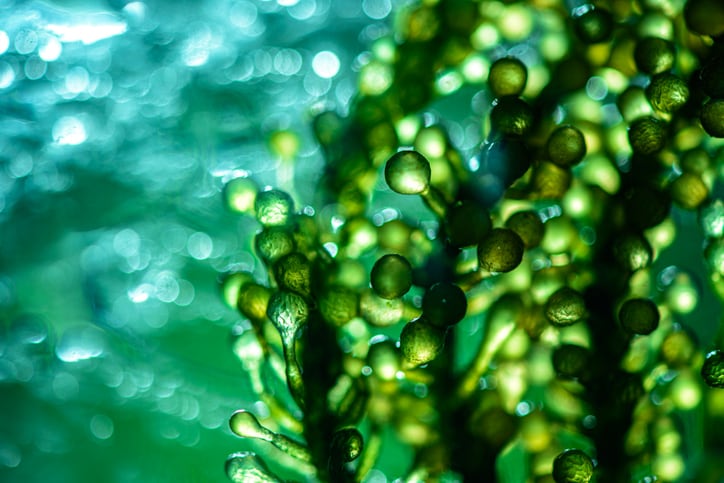The recent review by authors from the University of Padua, Italy, has concluded that bioactive compounds of microalgae, in addition to possessing high antioxidant properties, can enhance mitochondrial functionality by modulating the expression of numerous protective factors and enzymes.
The authors note that this in turn regulates some essential biochemical pathways for the preservation of the functional integrity of the cell.
An ageing population
Over the past 70 years, the global population has surged from 2.5 billion to over 7 billion, accompanied by a widespread ageing trend since 1980.
The authors note that this demographic shift has significant implications for healthcare costs and the prevalence of chronic diseases among the elderly.
Delaying the onset and severity of these diseases through policy interventions is crucial, as the authors of the review state.
Scientific consensus recognises diet as a vital factor in promoting and maintaining human health, particularly in preventing age-related ailments.
However, the authors state that the Western diet, characterised by excessive calorie consumption, processed foods, unhealthy fats, high-glycemic-index carbohydrates, and low fibre content, contribute to health risks.
Conversely, plant-based foods, rich in antioxidants, minerals, vitamins, and fibres have shown potential in reducing diseases and extending lifespan.
The authors state: “As part of a synergistic effort of scientific research and sustainable economic development aimed at promoting healthy ageing, the identification and characterisation of functional foods assume great relevance.
“These, even taken in modest amounts, can effectively contribute to favour the improvement of the diet of populations with a high ageing rate while, at the same time, supporting economic policies oriented towards a sustainable development model.”
Microalgae and the mitochondria
Microalgae are now considered innovative functional foods which could play an important role in delaying ageing and also in reducing the impact of many age-related diseases, with many studies reporting on the value of microalgae as a source of healthful substances, especially antioxidant compounds.
Oxidative stress represents the main mechanism of alteration of cellular and tissue homeostasis at the basis of ageing and many important diseases.
Mitochondria, the cellular components where numerous redox reactions occur, are highly vulnerable to oxidative damage.
However, the authors note that the significance of proper nutrition in maintaining mitochondrial function remains an area of limited understanding, despite gaining attention in clinical research.
The review focused on the potential of microalgal compounds in preventing functional mitochondrial disorders, aiming to highlight how they provide chemical protection against oxidant compounds but also modulate mitochondrial life cycles and key biochemical pathways.
Multifunctionality
As they report, the last couple of decades has seen microalgae studied particularly for their ability to concentrate actives suitable to promote well-being and health.
The authors explain: “Even if some microalgal species can be considered for their relevant contribution to macronutrients, in general, the nutritional interest of these microorganisms is closely related to their supply of active compounds.
“For instance, the food use of the algae Haematococcus derivatives provides a high amount of astaxanthin (a very active carotenoid) which cannot be compared with any traditional food.”
In previous research, a daily intake of 6g dry weight (DW) of the algae Nannochloropsis was shown to guarantee the intake of 240 mg/day of eicosapentaenoic acid (EPA), as recommended by EFSA, comparable to a weekly consumption of about 236 g fresh weight of seabream or seabass.
However, as the authors note, the fish oil required to produce an equivalent amount (800–1200g of wild forage fish) is ecologically unsustainable.
The review notes that microalgae are rich in several compounds, such as the cyanobacteria Arthrospira which can contain up to 60% DW of proteins rich in essential amino acids.
Additionally, microalgae are a valuable source of vitamins such as tocopherols and important vitamins of the B group (e.g., B6, B9, B12), as well as vitamins D and K.
The high content of minerals is consistent with the composition of ash, which can vary between 13–18% in marine microalgae and 4.5–6.7% in some freshwater species, such as Chlorella and Arthrospira.
Previous research has found that some minerals of high interest for nutritional scopes can be abundant in microalgae: for instance, the algae diatom Phaeodactylum tricornutum contains about 5% DW of Ca and 0.24% DW of Fe.
“Multifunctionality is one of the most interesting characteristics of microalgae and suggests that they can represent excellent functional foods, potentially suitable for simultaneously providing protection against different types of metabolic disorders and for delaying cellular ageing through complementary and synergistic mechanisms of action,” the authors state.
They do however note: “The use of microalgae for foods would require further development of the downstream processing of cell mass and products to improve the bioavailability of active compounds of interest and, in addition, to ensure preservation until consumption.”
They add: “Furthermore, an ethical issue concerning the preservation of natural resources should be considered.”
Journal: Nutraceuticals
https://www.mdpi.com/1661-3821/3/1/10
“Potential of Microalgae as Functional Foods Applied to Mitochondria Protection and Healthy Aging Promotion”
Authors: Lorenzo Zanella and Fabio Vianello


